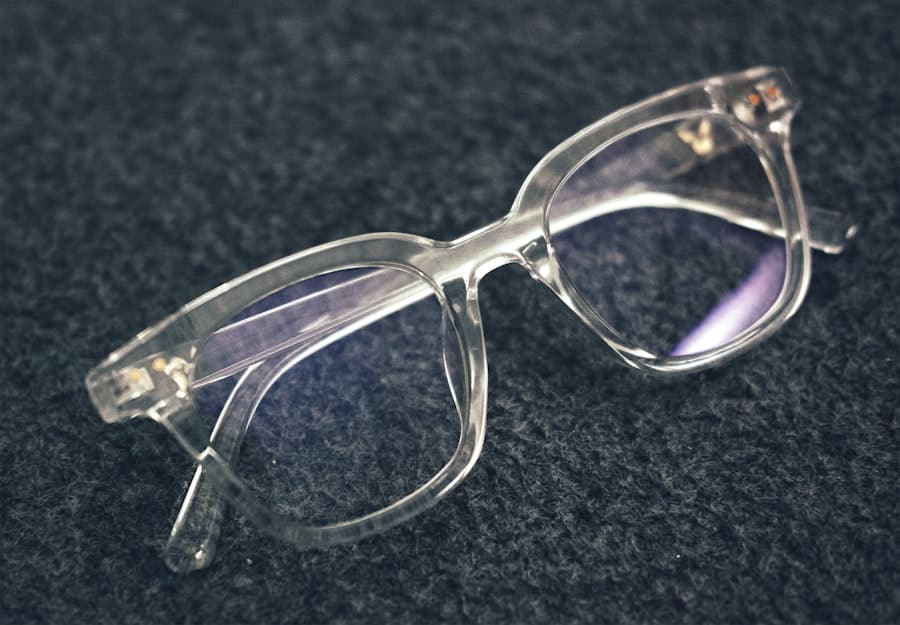Augmented Reality (AR) glasses have emerged as a transformative technology in various sectors, particularly in field service jobs. These innovative devices overlay digital information onto the real world, enhancing the way technicians interact with their environment. In field service, where technicians often work in complex and dynamic settings, AR glasses provide critical support by delivering real-time data, visual instructions, and remote assistance.
This technology is not merely a futuristic concept; it is actively reshaping how tasks are performed, leading to improved accuracy and efficiency. The integration of AR glasses into field service operations signifies a shift towards more technologically advanced methodologies. As industries strive for greater efficiency and reduced operational costs, the adoption of AR glasses becomes increasingly relevant.
These devices enable technicians to access vital information hands-free, allowing them to focus on their tasks without the distraction of traditional screens or manuals. The potential for AR glasses to streamline processes and enhance communication is particularly valuable in environments where time and precision are paramount.
Key Takeaways
- AR glasses are wearable devices that overlay digital information onto the user’s real-world view, making them a valuable tool for field service jobs.
- Using AR glasses in field service jobs can lead to increased efficiency, improved accuracy, and enhanced safety for technicians.
- AR glasses improve efficiency and productivity in field service jobs by providing real-time access to information, remote assistance, and hands-free operation.
- Examples of AR glasses applications in different field service industries include remote equipment diagnostics, guided maintenance, and on-the-job training.
- Training and onboarding with AR glasses for field service technicians can be more effective and engaging, leading to faster skill acquisition and reduced errors.
Advantages of Using AR Glasses in Field Service Jobs
Enhanced Real-Time Communication
One of the most notable benefits is the enhancement of real-time communication. With AR glasses, technicians can connect with experts remotely, sharing their field of view and receiving immediate guidance. This capability is especially beneficial in situations where on-site expertise is limited or when complex problems arise that require specialized knowledge.
Reduced Errors and Downtime
Another significant advantage is the reduction of errors during service tasks. AR glasses can provide step-by-step visual instructions directly in the technician’s line of sight, minimizing the chances of mistakes that could arise from misinterpretation of written manuals or diagrams. For instance, when repairing machinery, AR glasses can highlight specific components that need attention, guiding technicians through intricate procedures with precision.
Improved Quality of Work and Technician Confidence
This not only enhances the quality of work but also boosts technician confidence, as they can rely on visual cues rather than solely on memory or experience. The ability to consult with a remote expert while simultaneously working on a task can drastically reduce downtime and improve problem resolution times.
How AR Glasses Improve Efficiency and Productivity in Field Service Jobs

AR glasses play a crucial role in improving efficiency and productivity within field service jobs by streamlining workflows and reducing the time spent on tasks. By providing technicians with instant access to relevant information, these devices eliminate the need for them to search through manuals or consult with colleagues for assistance. For example, when a technician is dispatched to troubleshoot an issue, they can use AR glasses to pull up schematics or diagnostic data without having to divert their attention from the task at hand.
This seamless access to information allows for quicker decision-making and faster completion of service calls. Moreover, AR glasses facilitate better task management by enabling technicians to prioritize their work based on real-time data. For instance, if a technician is alerted to multiple service requests in a given area, they can use AR glasses to visualize their route and optimize their schedule accordingly.
This capability not only enhances individual productivity but also contributes to overall operational efficiency by ensuring that resources are allocated effectively. As a result, organizations can handle more service requests within the same timeframe, ultimately leading to increased customer satisfaction.
Examples of AR Glasses Applications in Different Field Service Industries
The application of AR glasses spans various field service industries, each benefiting uniquely from this technology. In the telecommunications sector, technicians often face challenges when installing or repairing complex network systems. By utilizing AR glasses, they can visualize network layouts and receive real-time updates on system performance.
For example, when installing fiber optic cables, AR glasses can overlay installation paths directly onto the technician’s view, ensuring accurate placement and reducing installation time. In the manufacturing industry, AR glasses are used for maintenance and assembly tasks. Technicians can follow interactive assembly instructions projected onto their field of vision, which helps them complete tasks more efficiently and with fewer errors.
Companies like Boeing have implemented AR technology in their assembly lines, where workers use AR glasses to visualize wiring diagrams and assembly instructions while working on aircraft components. This application has led to significant reductions in assembly time and improved quality control. The healthcare sector also leverages AR glasses for field service applications, particularly in medical equipment maintenance and repair.
Technicians responsible for servicing complex medical devices can use AR glasses to access schematics and troubleshooting guides while performing repairs.
Training and Onboarding with AR Glasses for Field Service Technicians
Training and onboarding new field service technicians can be a resource-intensive process, but AR glasses offer innovative solutions to streamline this experience. By utilizing AR technology, organizations can create immersive training programs that allow new hires to learn in a hands-on environment without the risks associated with real-world scenarios. For instance, trainees can practice equipment repairs using virtual overlays that guide them through each step of the process, reinforcing their learning through practical application.
Additionally, AR glasses can facilitate ongoing training for existing technicians by providing access to updated procedures and best practices directly in their line of sight. This continuous learning approach ensures that technicians remain current with industry standards and technological advancements without requiring extensive retraining sessions. Companies can also use AR glasses to simulate emergency scenarios or complex repairs during training sessions, allowing technicians to develop problem-solving skills in a controlled environment.
Overcoming Challenges and Obstacles in Implementing AR Glasses in Field Service Jobs

Despite the numerous benefits of AR glasses in field service jobs, several challenges must be addressed for successful implementation. One significant obstacle is the initial cost associated with acquiring AR technology and integrating it into existing workflows. Organizations may hesitate to invest in this technology due to concerns about return on investment (ROI).
To overcome this challenge, companies must conduct thorough cost-benefit analyses that demonstrate how AR glasses can lead to long-term savings through increased efficiency and reduced error rates. Another challenge lies in ensuring that technicians are adequately trained to use AR glasses effectively. While the technology may be intuitive for some users, others may require additional support to become proficient.
Organizations should prioritize comprehensive training programs that not only cover how to operate the devices but also emphasize how to leverage their capabilities for maximum impact on job performance. Additionally, addressing potential resistance from employees who may be skeptical about adopting new technologies is crucial for fostering a culture of innovation within the organization.
Future Trends and Developments in AR Glasses for Field Service Jobs
As technology continues to evolve, so too will the capabilities of AR glasses in field service jobs. One emerging trend is the integration of artificial intelligence (AI) with AR technology.
This integration will enable technicians to anticipate issues before they arise, further enhancing efficiency and reducing downtime. Another promising development is the miniaturization of AR hardware, making devices lighter and more comfortable for prolonged use. As manufacturers focus on creating sleeker designs with improved battery life and enhanced display quality, technicians will be able to wear these devices for extended periods without discomfort or distraction.
Additionally, advancements in 5G connectivity will facilitate faster data transmission between technicians and remote experts, allowing for more seamless collaboration during service tasks. Furthermore, as organizations increasingly recognize the value of data analytics in optimizing operations, AR glasses will likely incorporate advanced analytics features that provide insights into technician performance and operational efficiency. By leveraging data collected during service calls, companies can identify trends and areas for improvement, ultimately leading to more informed decision-making.
The Impact of AR Glasses on the Future of Field Service Jobs
The impact of AR glasses on field service jobs is profound and far-reaching. As organizations continue to embrace this technology, they will unlock new levels of efficiency, accuracy, and productivity that were previously unattainable. The ability to provide technicians with real-time information and support not only enhances their performance but also improves customer satisfaction by ensuring timely and effective service delivery.
As we look toward the future, it is clear that AR glasses will play an integral role in shaping the landscape of field service jobs across various industries. The ongoing advancements in technology will further enhance the capabilities of these devices, making them indispensable tools for technicians navigating increasingly complex environments. The journey towards widespread adoption may present challenges; however, the potential rewards make it a worthwhile endeavor for organizations committed to innovation and excellence in service delivery.
AR glasses have the potential to completely transform field service jobs by providing workers with real-time information and hands-free operation. This technology can greatly improve efficiency and accuracy in various industries. For more information on how technology is impacting different aspects of our lives, check out this article on how to choose your child’s first tablet.
FAQs
What are AR glasses?
AR glasses, or augmented reality glasses, are wearable devices that overlay digital information onto the user’s real-world view. They typically include a display, camera, and sensors to provide an immersive AR experience.
How can AR glasses revolutionize field service jobs?
AR glasses can revolutionize field service jobs by providing technicians with hands-free access to important information, such as equipment manuals, schematics, and real-time data. This can improve efficiency, accuracy, and safety in the field.
What are some specific benefits of using AR glasses in field service jobs?
Some specific benefits of using AR glasses in field service jobs include improved troubleshooting and problem-solving capabilities, remote expert assistance, reduced downtime, and enhanced training opportunities for new technicians.
Are there any challenges or limitations to using AR glasses in field service jobs?
Challenges and limitations of using AR glasses in field service jobs may include cost, technical limitations, user acceptance, and privacy concerns. Additionally, the need for reliable connectivity and battery life can also be potential challenges.
What industries can benefit from the use of AR glasses in field service jobs?
A wide range of industries can benefit from the use of AR glasses in field service jobs, including manufacturing, utilities, telecommunications, healthcare, construction, and more. Any industry that requires on-site maintenance, repair, or inspection can potentially benefit from AR glasses.

